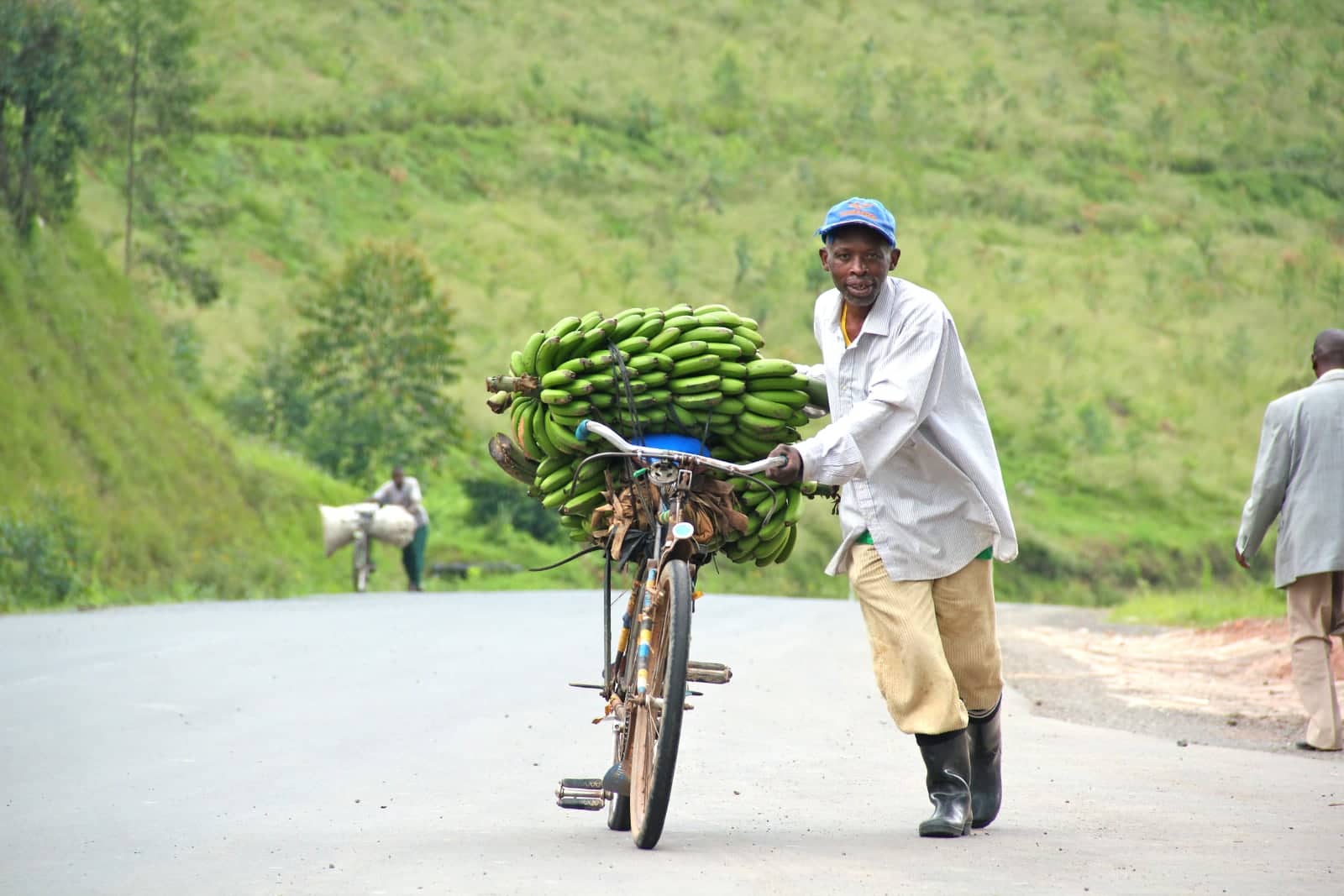
Local man transporting bananas using bicycle Photo credit: Gerry Feehan
The Mountain Gorillas of Rwanda – Part II
Have you ever seen a silverback up close, in the wild? This is a massive, majestic, frighteningly powerful creature; capable of bending a bamboo tree sideway with one arm while casually enjoying the plant’s tender shoots with the other.
Gorilla terrain is steep and challenging. Rain-forest obstacles (stinging nettles are a rookie treat) await the unwary. While almost human-like in their mannerisms, gorillas haven’t yet discovered jungle sanitation. In my exuberance, filming a mother suckling her newborn on a precipitous slope, I stepped where I shouldn’t. My feet flew from under me. I slipped downhill toward the waiting arms of an agitated silverback. Fortunately I regained my balance and retreated before he mistook me for albino bamboo.
“Please stay in position,” our guide chided. He didn’t have to tell me twice. For the remainder of the hour I kept a keen eye on where the gorillas had tread.
When we returned from our incredible gorilla experience, Amon was quiet, pensive. “How did you enjoy the gorillas?” he asked. I was excited to tell him but it was obvious he had something else on his mind. We hadn’t pried but the effects of the genocide were written in his expression, in the songs he sang as we drove the country and in the way he optimistically described Rwanda’s progress.
The next day he took us to the Genocide Memorial in Kigali.
“This man,” he said pointing to one of hundreds of anonymous photographs taped to a wall, “this is my father”. He looked down and quietly said, “250,000 people are buried in this place.”
“Do you have other family?” I asked. We had met Amon’s sister at the airport. She is in her forties and studies tourism at the University of Kigali.
“There was my mother and my father. And ten children. Now there are just us two.
“He said this without emotion, neither sad nor bitter. Then he took us to Ntarama and Nyamata, tiny rural Catholic churches where the faithful sought refuge in early May, 1994. Many thousands were slaughtered in three days. Stained clothing, skulls and bones, all neatly stacked are permanent reminders of the atrocities which occurred here. Ask me sometime and I’ll tell you the details. What man can do to his fellow man is not fit for print.
The day we left Rwanda Amon took us shopping in a poor Kigali neighbourhood. We bartered mercilessly with a shabbily dressed woman over two fine hand-woven rope and raffia baskets. Eventually we agreed on 2000 Rwandan francs (about $3) for the pair. As the money passed from my hand to hers the worn bills exuded the smell of Africa: red earth, burning charcoal, the acrid odour of wet smog. And the hard toil of human sweat.
I wish we’d paid that woman the six dollars she was asking.
Gerry
